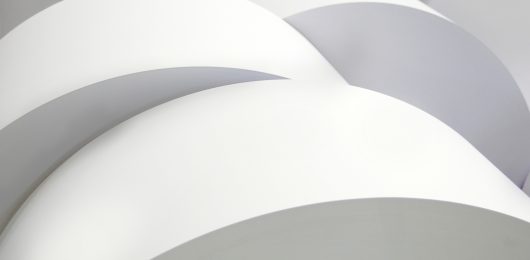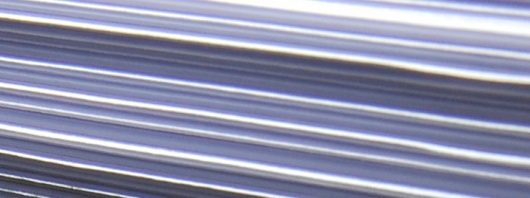


During the papermaking process, the fibers tend to be arranged in the direction of the pressure screen´s movement. Because of this, we can say that, in relation to the direction of the fibers, the paper can be distinguished by two directions: Longitudinal and Transversal.
The cellulose fiber has hygroscopic characteristics, that is, it either absorbs or exudes moisture according to the condition of the environment. This feature relates to the paper´s dimensional stability, which, when in contact with the wetting agent during the offset printing process, can suffer from the opening of the paper, causing difficulties to perform the print registration control (color matching in reticulated art and chromia type print).
The paper fiber in the transverse direction suffers greater swelling than the fiber in the longitudinal direction. It is therefore recommended that the sheet paper used for flat offset printing should be fed by directing fibers parallel to the printer feed direction. This will ensure that the wetting during the printing process will occur in the paper´s longitudinal direction, avoiding difficulties in the print registration control.
To identify which direction the paper fiber is aligned in a ream or skid, the format should be checked on the label. The fiber will always be directed towards the second number identified in the format. Ex: if it is 66 × 96 cm, the fiber will be in the direction with 96 cm in the sheet format. If the paper is not fed into the printer in its original format, the paper with the initially inverted fiber direction may be purchased so that when the cutting is done, it will be in the correct feed direction in the printer.
There are other methods of identifying the fiber direction on a single sheet of paper. A simple one is to make a tear on the paper in both its length and width and subsequently observe in which of them there is greater symmetry. The most symmetrical side is characterized by the paper´s fiber direction (longitudinal) and the other direction will be the opposite to the fiber (Transverse).

Every line of Santa Maria paper is of acid-free paper. Do you know what the advantage of this is? To better understand this feature we need to first understand the definition of paper bonding. Paper bonding consists of reducing or retarding the water penetration in the paper without waterproofing it. Paper used for printing or […]

During the papermaking process, the fibers tend to be arranged in the direction of the pressure screen´s movement. Because of this, we can say that, in relation to the direction of the fibers, the paper can be distinguished by two directions: Longitudinal and Transversal. The cellulose fiber has hygroscopic characteristics, that is, it either absorbs […]
Product added successfully
Product removed successfully